
Canada: Build a Spunding Valve! – How and Why
A Spunding Valve allows you to maintain a set pressure. If pressure in the vessel exceeds the set point, it is expelled. It generally consists of an adjustable PRV valve, a tee, a gauge and a way to connect to your keg.
This is a version of our Spunding Valve Build that features components that are generally available in Canada.
Are you a US Homebrewer?
Check out the US Version of this Post – Build a Spunding Valve! – How and Why
Related Resources:
- Hands on Review: Kegland BlowTie Spunding Valve! – Search eBay for “Kegland BlowTie” to search for an offering that ships to you
- Oxygen Free Transfer and Cold Crash Using a Spunding Valve
- Build a Spunding Valve! – How and Why
Homebrewing Applications of a Spunding Valve
- Pressurized fermentation. Ferment in a 5 or 10 gallon corny keg and use your Spunding Valve instead of an airlock. This allows you to ferment at your desired pressure.
- Dry hop under pressure. This allows you to dry hop earlier while reducing oxygenation. Active yeast are more likely to metabolize oxygen that’s introduced during dry hopping during active fermentation. Since CO2 is not exiting beer as vigorously under pressure, wanted compounds, flavors and aromas are more likely to stay in your beer under pressure.
- Naturally and accurately carbonate beer right in the keg.
- An airlock replacement. Keep the valve wide open for non-pressurized fermentations. Only do this if you have plenty of head space. This wouldn’t make a great blow off tube.
- Keg to keg transfers. Use the Spunding Valve to allow excess gas to exit the receiving keg as you transfer under pressure. Helps you achieve a slow, controlled and pressurized transfer.
- Fix over-carbonated beers.
- Test for keg leaks. Pressurize your keg to serving pressure. Put the Spunding Valve on (with the pressure set well above your serving PSI) and note the reading. The gauge should remain steady. If pressure drops, you know you have a keg leak. The digital build, see below, is especially helpful for this task, The digital gauge reads with .1 PSI resolution making pressure changes easy to spot. It’s worth noting that this checks the entire keg including gas body o-ring. That spot is hard to check and other way as it’s only in function when the gas QD is on. When the gas QD is on… it’s difficult to spray and check for bubbles underneath the gas QD. Thanks to Scott Janish for this tip!
- As an airlock for long term aging of beers. Airlocks can run dry over time. A Spunding Valve will not.
- Utilize CO2 from fermentation for flushing kegs and fermenters.
Naturally Carbonating with a Spunding Valve
Carbonation directly in your keg allows you to naturally carbonate your beer (saving CO2 and $) while maintaining reasonably tight control on carbonation levels. This could be done by adding priming sugar, capping fermentation prior to the completion of fermentation or more traditional krausening (adding wort back to the fermenter).
Basic Steps for Carbonating in a Keg Using a Spunding Valve:
- Ferment in a pressure capable fermenter. A 5 gallon keg works for small batches. Other options are available for larger batches including this like 10 gallon kegs.
- Prime the keg with your choice of priming sugar or wort (or start this process late in fermentation when some fermentable sugars remain)
- Determine your desired pressure based on temperature and desired carbonation using a carbonation chart. See: Balancing Your Draft System for a carbonation chart.
- Pressurize the keg to just over your desired final pressure.
- Attach the Spunding Valve
- Slowly dial down the pressure until you achieve your desired pressure – More about setting pressure
- Wait. As the remaining simple sugars are fermented, carbonation occurs and excess CO2 will be expelled from the spunding valve giving you just the right amount of carbonation. I give it a couple days after reaching target pressure. If you’re less sure how much fermentable sugar remained, I would suggest giving it a few days longer.
- Chill your keg, allowing your beer to absorb head space CO2 and reach equilibrium.
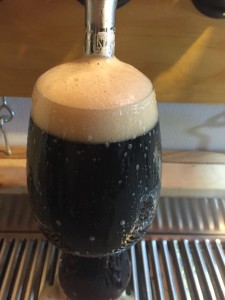
This is a 2.5 gallon batch of beer that I fermented and naturally carbonated all in a 5 gallon keg. I poured this immediately after it was transferred from the fermenter keg into a serving keg.
Fix Over-Carbonated Beers
A Spunding Valve can assist with fixing over-carbonated beer.
- Determine your desired pressure based on temperature and desired carbonation using a carbonation chart. See: Balancing Your Draft System for a carbonation chart.
- Pressurize the keg to just over your desired final pressure.
- Attach the Spunding Valve
- Slowly dial down the pressure until you achieve your desired pressure – More about setting pressure
- The Spunding Valve allows excess pressure to vent until the new carbonation level is achieved.
- You can periodically agitate the keg to fix carbonation more quickly.
Oxygen Free Cold Crash and Transfer Using a Spunding Valve
Check out my Step by Step Process for Cold Crashing & Oxygen Free Transfer with the help of a Spunding Valve
Fermenting Under Pressure!
Check Out Our In-Depth Resource Post on Pressurized Fermentation
Use CO2 Produced by Fermentation to Purge Serving Kegs, Carboys & Fermenters
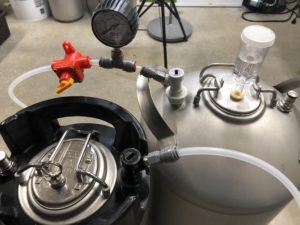
This technique requires a BlowTie Spunding Valve. Since the the BlowTie has a defined output port, you can use it to capture CO2 produced by fermentation. The “out” side of the BlowTie is a DuoTight connection, just like the “in” side. Use compatible EVABarrier tubing and fittings and you can route outgoing CO2 wherever you’d like. The primary application I can think of for using this is to purge kegs, carboys and fermenters. The pictured setup shows a 10 gallon keg converted to a fermenter. The “out” side of the BlowTie is connected to the liquid out side of an empty keg. That allows incoming CO2 to purge the keg from bottom to top. The lid PRV valve for the receiving keg is open to allow pressure to vent. Of course you could tee the “out” side and flush multiple kegs or vessels using the CO2 produced by a single fermenter.
- Hands on Review: Kegland BlowTie Spunding Valve!
- Search eBay for “Kegland BlowTie” to search for an offering that ships to you
Related: Hands on Review: Kegland DuoTight Fittings & EVABarrier Tubing!
Setting Spunding Valve Pressure
When setting desired pressure… start higher than your desiged set point and slowly work your way down. As the valve gets close to where it is going to eventually settle, it slows down the release of gas. Working your way slowly down, helps you hit your desired pressure without passing it (going too low).
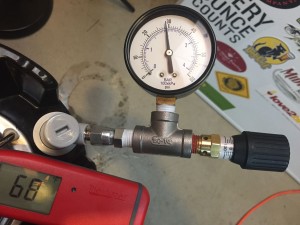 Here I’m dialing in my desired pressure. Also pictured: Thermapen [Review].
Here I’m dialing in my desired pressure. Also pictured: Thermapen [Review].
Building A Spunding Valve
Note: Product pages may display other size variations of the fittings used here. If a particular size is out of stock, sometimes suppliers link to another size. All thread sizes for this build are 1/4″. If you want to replicate this build, pay special attention to the fitting sizes that are used and double check to make sure you’re purchasing the correct size fittings.
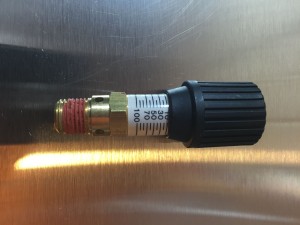 This valve [Control Devices CR Series Brass Pressure Relief Valve, 0-100 psi Adjustable Pressure Range, 1/4″ Male NPT] is the heart of this Spunding Valve build. It is essentially a manually adjustable pressure relief valve. This one is adjustable from 0 to 100 PSI. There is no homebrewing-related situation I’m aware of that would have you at 100 PSI. Generally you’d be at or below 30 PSI. As always, you’ll want to ensure that all components in your system (kegs, tubing, etc) are rated for your desired pressure. Also, always read and follow manufacturer’s instructions and guidelines.
This valve [Control Devices CR Series Brass Pressure Relief Valve, 0-100 psi Adjustable Pressure Range, 1/4″ Male NPT] is the heart of this Spunding Valve build. It is essentially a manually adjustable pressure relief valve. This one is adjustable from 0 to 100 PSI. There is no homebrewing-related situation I’m aware of that would have you at 100 PSI. Generally you’d be at or below 30 PSI. As always, you’ll want to ensure that all components in your system (kegs, tubing, etc) are rated for your desired pressure. Also, always read and follow manufacturer’s instructions and guidelines.
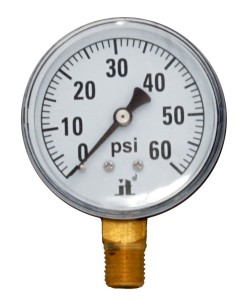 This build constitutes the second version of this valve for me. My first build had a 30 PSI gauge. That’s good for almost every situation. With this update I wanted the ability to go to a little higher pressure if needed. I used a Zenport DPG60 Gauge for this build. It reads 0 to 60 PSI.
This build constitutes the second version of this valve for me. My first build had a 30 PSI gauge. That’s good for almost every situation. With this update I wanted the ability to go to a little higher pressure if needed. I used a Zenport DPG60 Gauge for this build. It reads 0 to 60 PSI.
This brass 1/4″ tee fitting connects the relief valve, pressure gauge and a final connection fitting together. Practically speaking any properly rated 1/4″ NPT threaded tee fitting should work.
The only thing that remains is choosing how the assembly will connect to your serving or fermenting keg. This brass barb – Anderson Metals 57001 Brass Hose Fitting, Adapter, 1/4″ Barb x 1/4″ NPT Male Pipe. Is one option. Note that when assembling, the gauge and barb fitting will probably require require some valve sealant tape, the adjustable relief valve comes with some sort of thread sealant.
Here is the completed build – thank you to /u/workaccount32 on reddit for this photo
Spunding Valve Tips
- Check for leaks. If you’re using a version that has a QD installed in some form or fashion, you can pressurize it on a keg and then take it off. There will be a small drop when you take it off, but the pressure should remain steady after that. If it’s going down, make sure everything is tight. If you don’t have a QD… spray with Star San or soapy water until you are leak free.
- When setting desired pressure… start high and work your way down. As the valve gets close to where it is going to eventually settle, it slows down the release of gas. Working your way slowly down, helps you hit your desired pressure without passing it (going too low).
 Here I’m dialing in my desired pressure. Also pictured: Thermapen Mk4 [Review].
Here I’m dialing in my desired pressure. Also pictured: Thermapen Mk4 [Review].
Spunding Build Parts List
Note: Product pages may display other size variations of the fittings used here. If a particular size is out of stock, sometimes suppliers link to another size. All thread sizes for this build, both NPT and flare, are 1/4″. If you want to replicate this build, pay special attention to the fitting sizes that are used and double check to make sure you’re purchasing the correct size fittings.
Build Components:
- Control Devices CR Series Brass Pressure Relief Valve, 0-100 psi Adjustable Pressure Range, 1/4″ Male NPT
- Zenport DPG60 Zen-Tek Dry Air Pressure Gauge, 60 PSI
- Anderson Metals 56101 Brass Pipe Fitting, Barstock Tee, 1/4″ x 1/4″ x 1/4″ NPT Female Pipe
- Anderson Metals 57001 Brass Hose Fitting, Adapter, 1/4″ Barb x 1/4″ NPT Male Pipe
- Dixon Valve TTB75 PTFE Industrial Sealant Tape, -212 to 500 Degree F Temperature Range, 3.5mil Thick, 520″ Length, 3/4″ Width, White
Related: Homebrew Finds for Canadian Homebrewers!
US Homebrewers – Build a Spunding Valve! – How and Why – part numbers and suppliers for US brewers
tsrspund pinnedThis post may contain affiliate links. We may make a commission when you use our links. This will never cost you extra. Thank you for supporting Homebrew Finds!
greatdealsAlways make sure the parts you use are compatible and are rated for your intended application. Contact manufacturers with questions about suitability or application. toppost:ca-spundingvalve tag:tpr
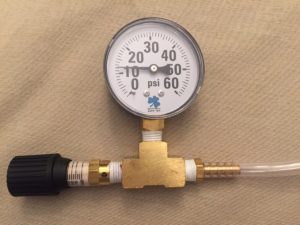
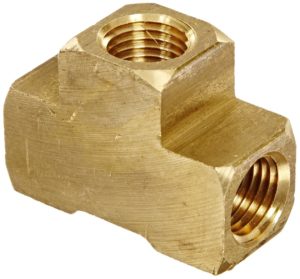
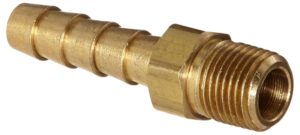
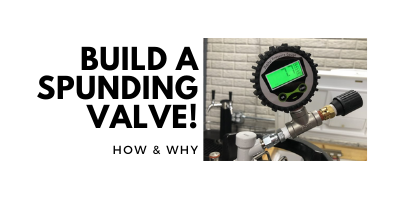
In your 2nd pic witht he thermapen…what is the adapter you have connecting your quick connect for the gas post to the stainless T on the spunding valve?
Hey Mark! If you go to the main spunding valve build post (linked in this post) it is under option 1. I would link you directly to it, but that fitting is difficult find in stock.
Would this benefit wine?
Not a whole bunch, but maybe in a couple areas. Could be used as a dry airlock.